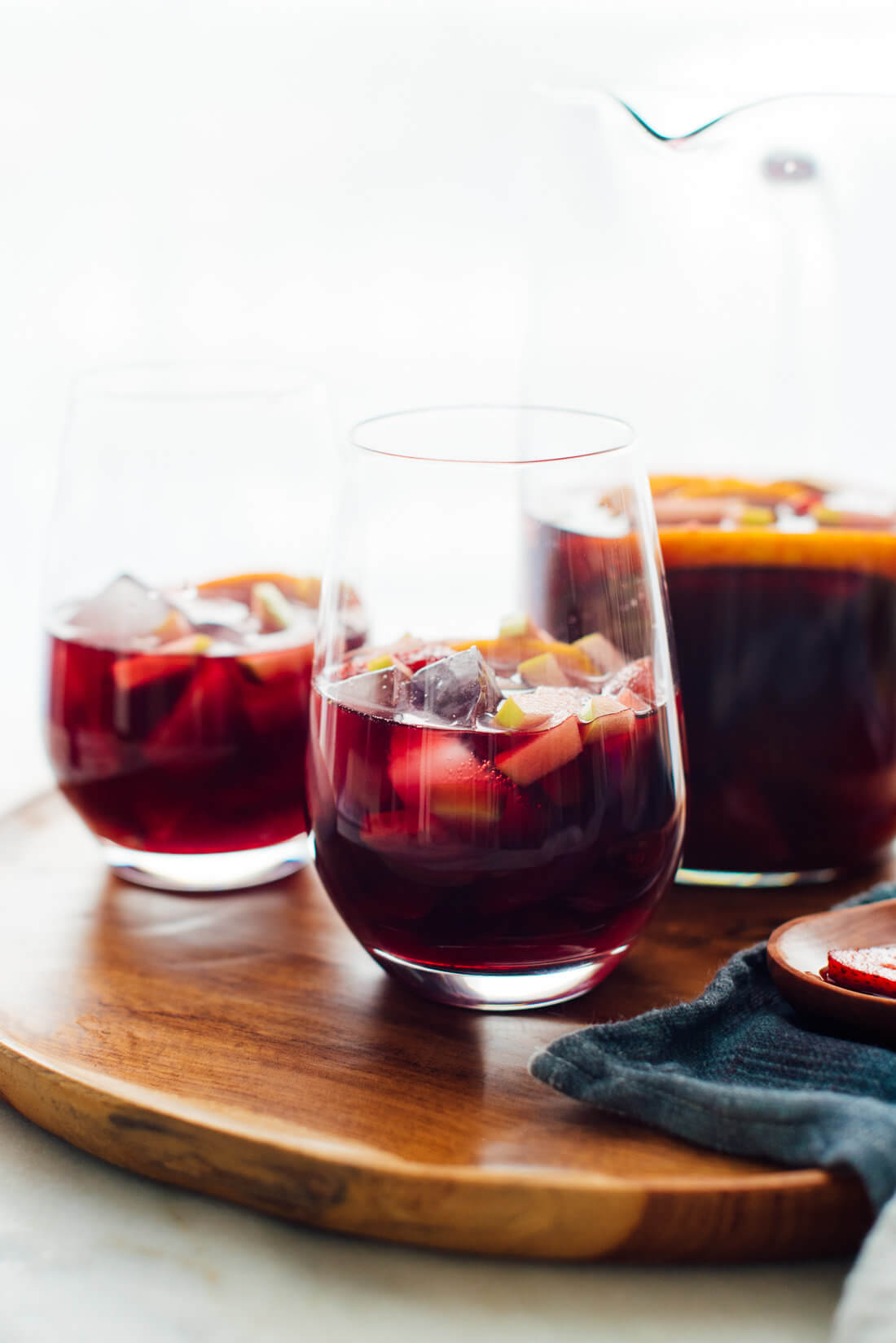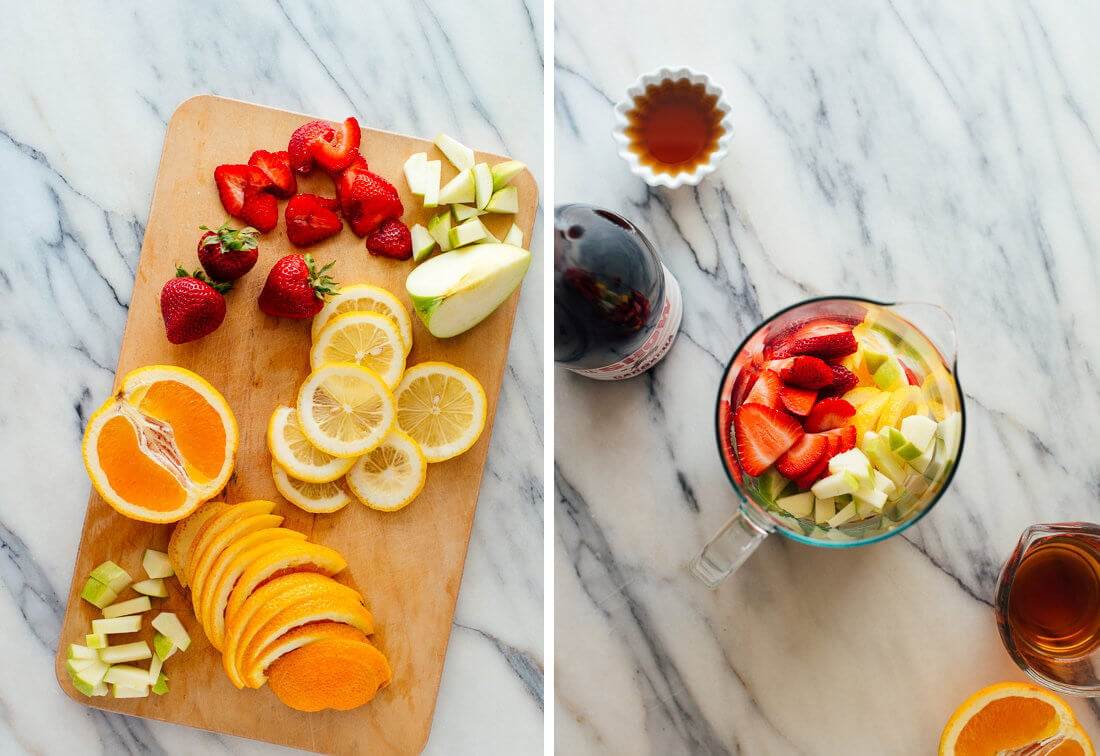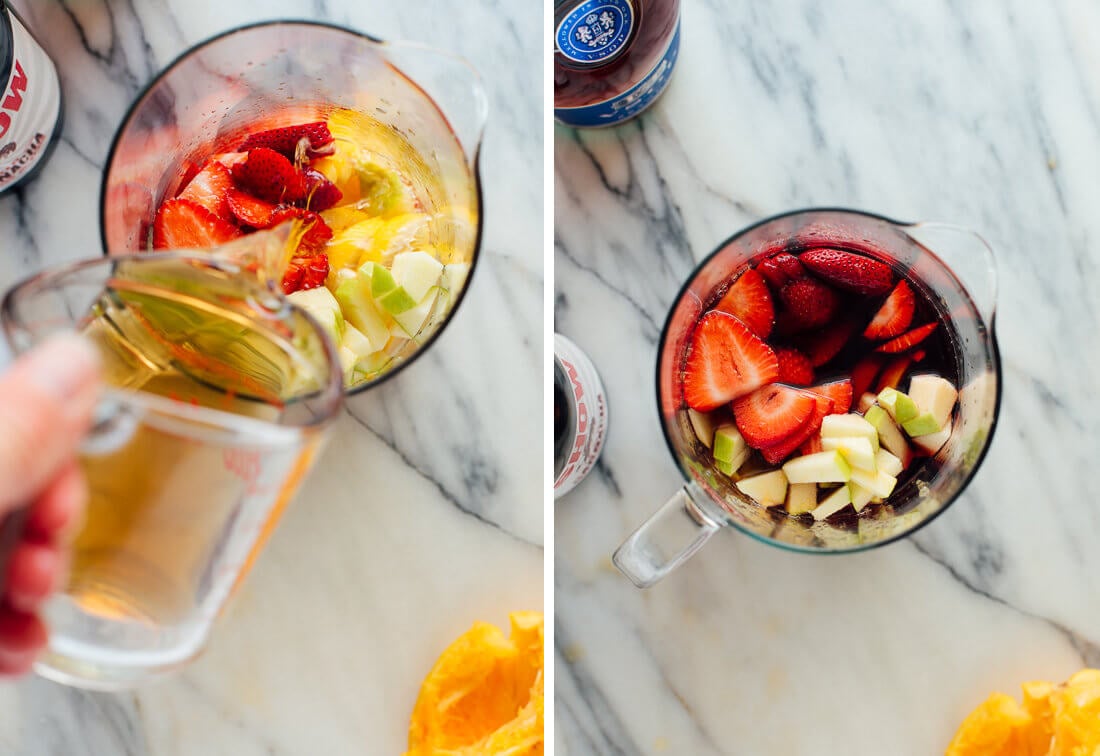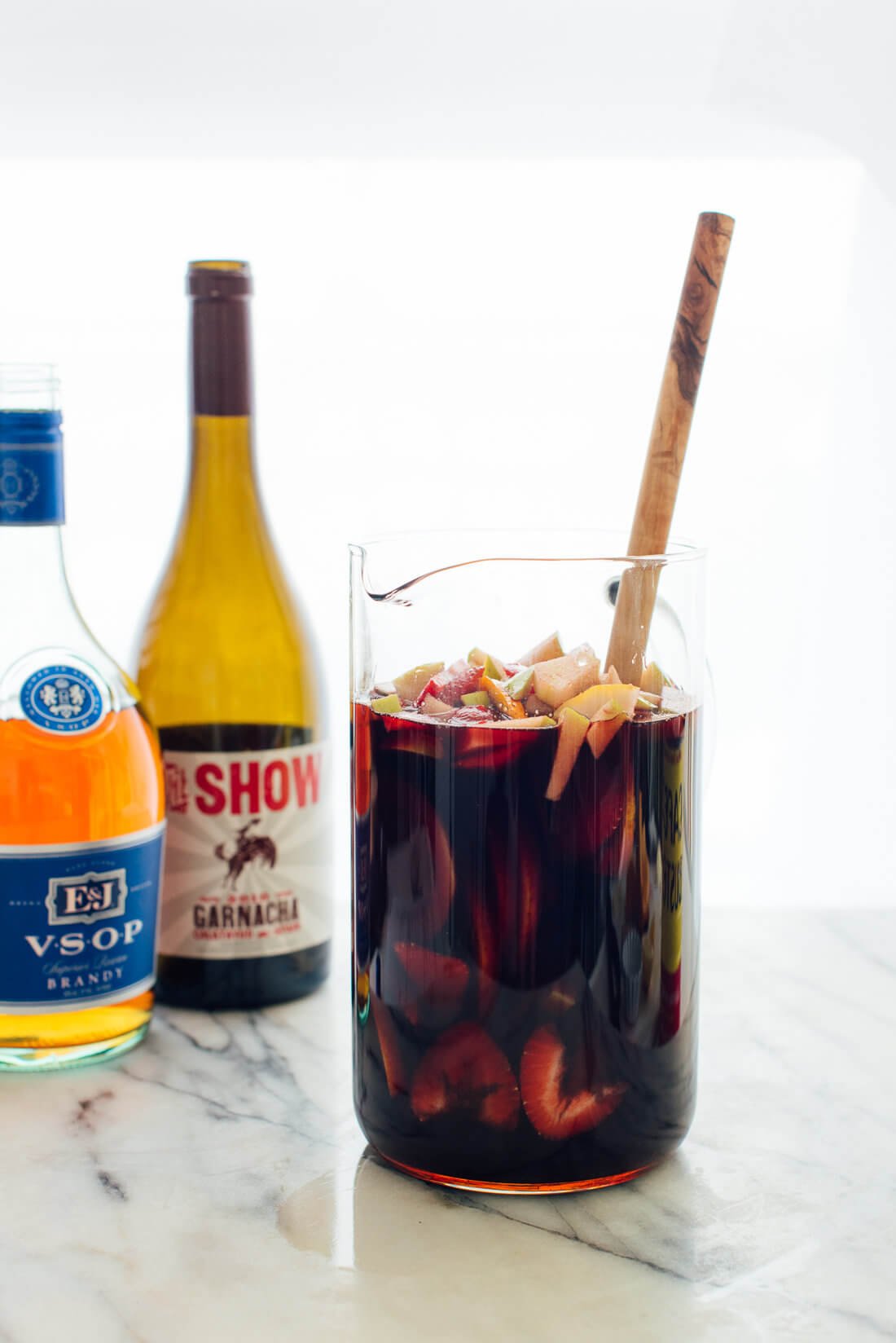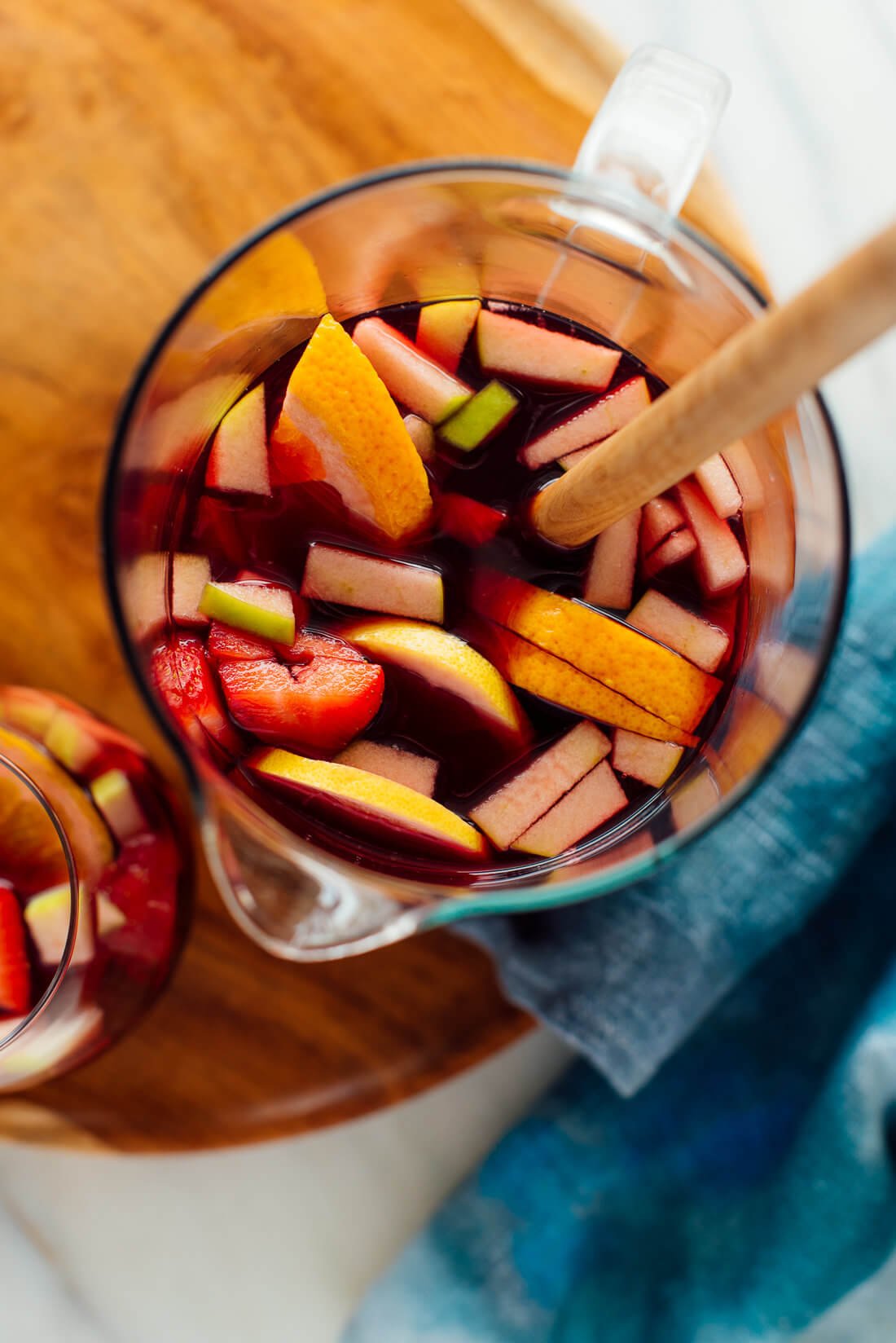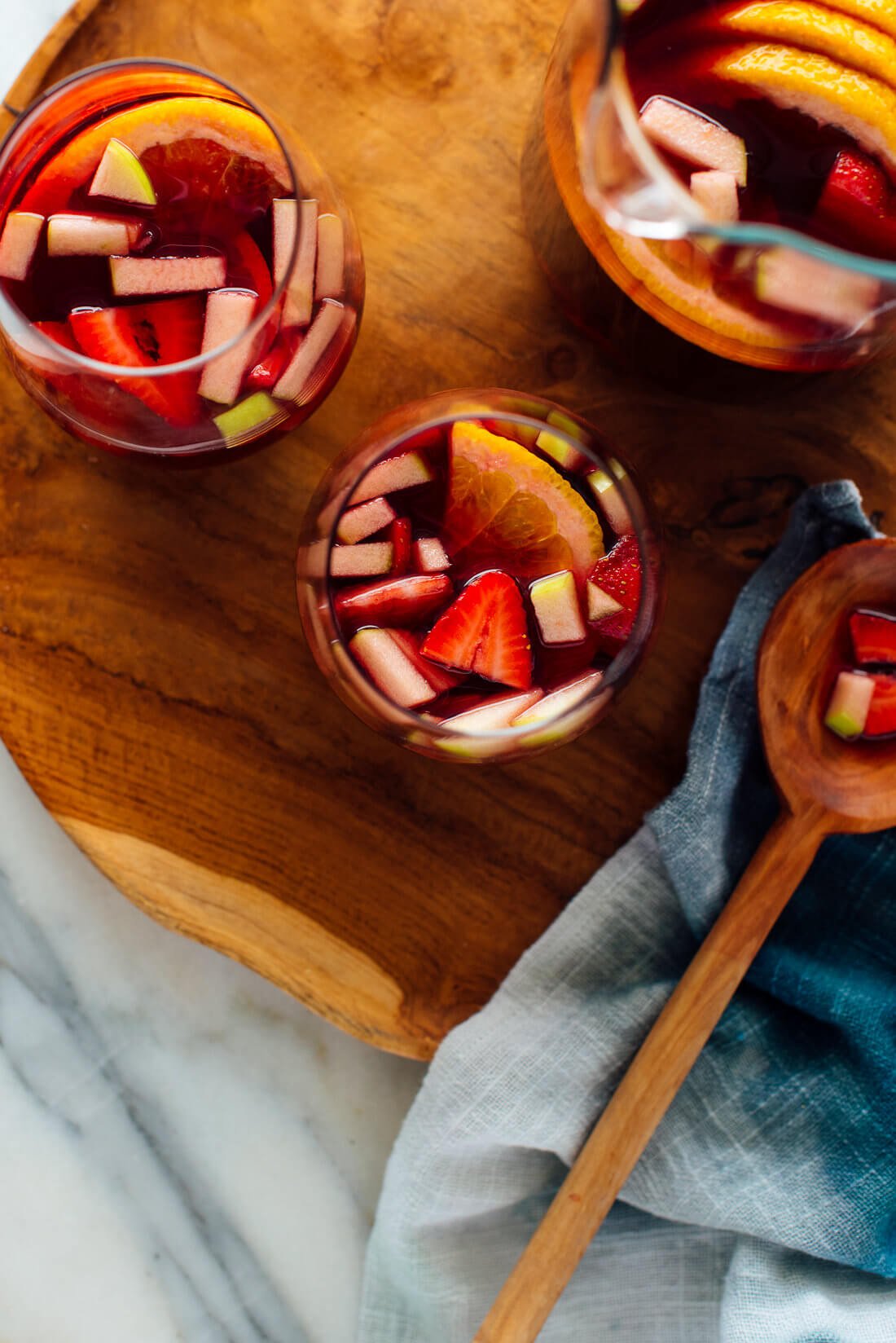Life is good! Let’s celebrate with this classic red sangria recipe. Sure, I love a glass of wine at the end of a long day, but sangria is best shared with friends. Sangria is festive, fruity and fun. It’s a perfect party punch to pair with Spanish tapas or Mexican food. Cold sangria is undeniably great on hot summer days. The red wine base and versatile seasonal fruit options make it appropriate for cooler days, too!
Sangria hails from Spain, although funny enough, my friend Ali lives in Spain and says they don’t drink it often over there. I visited Barcelona with friends in college and we bought cheap cartons of sangria from the convenience store by the beach. I don’t recommend that stuff. We’re going to make real sangria with good wine and fresh fruit today. Through research and trial and error, I’ve learned how to make the best red sangria. Ready?!
Red Sangria Ingredients
Start with these basic ingredients and you’ll end up with the best sangria you’ve ever had! Spoiler: you do not need any sweet liqueurs, sodas like 7-Up, or tons of sugar.
1) Bottle of Garnacha or Pinot Noir
The best wine for sangria is Garnacha (also called Grenache) or Pinot Noir. Garnacha comes from Spain, so it’s my top pick for authentic Spanish sangria! Choose an inexpensive wine (under $20) that you would enjoy on its own. Why Garnacha and Pinot Noir? They’re fruity, low-tannin red wines. Tannins are naturally-occurring compounds in grape skins, seeds and stems that can make the wine taste bitter or astringent. Cabernet Sauvignon, for example, is high in tannins. When it comes to sangria, the problem with tannins is that they taste weird when chilled. Cold high-tannin wine tastes sort of chalky, extra-astringent and generally not good. It’s difficult to combat those funky flavors, and I suspect sangrias are often loaded with sugar in an attempt to counteract the bitterness of the tannins. Thank you, Food & Wine, for helping me figure out the tannin factor!
2) Fresh ripe fruit
Fruit infuses the wine with fresh flavor and sweetness, and gives the sangria a fun confetti vibe. I always squeeze half of an orange into the sangria, then thinly slice the other half. I use lemon instead of lime based on a tip from America’s Test Kitchen. Then I add seasonal fruit—I love to use strawberries or peaches in the warmer months, and apples and pears in cooler months. Any combination will do!
3) Brandy
Brandy turns wine into a true cocktail and adds some kick. You don’t need to spend a lot on brandy. I used E & J Brandy VSOP for this sangria. In the mood for a more mellow, lower-alcohol content sangria? You can skip the brandy, use less of it, or dilute the sangria with some club soda.
4) Sweetener, to taste
You know I’m conservative with sweeteners, but sometimes a tiny bit helps balance the flavor of the brandy and rounds out the flavors. I also try to use natural sweetener when I can, and I’m excited to share that maple syrup is surprisingly awesome in sangria! Real maple syrup offers a very subtle caramel-like flavor that plays well with red wine and adds some extra complexity. It blends right into the other ingredients, which is nice. I usually only add one to two tablespoons of it, to taste. Start with the right wine and flavorful fruit, and you might not need any at all!
Enjoy Sangria Now or Later
Sangria is a fantastic make-ahead party punch. Stir it all together and refrigerate for 2 to 8 hours for maximum fruity flavor. In a hurry? Sangria doesn’t require a long rest before serving if you start with chilled wine and flavorful fruit! Squeezing half of the orange directly into the wine makes it taste a little fruity right off the bat, and the fragrance of the remaining fruit helps it taste quite fruity. Therefore, sangria is also an easy throw-together party cocktail if you keep a bottle of wine in the fridge. Are you as excited about this as I am?
Watch How to Make Sangria
Want to throw a Spanish-style get-together? Serve this sangria with olives, cheese, and vegetable paella. You might also like my gazpacho and Mediterranean-style tomato dips, including Sonja and Alex’s baked goat cheese with tomato sauce and my Mediterranean tomato and feta dip. Craving a fun spin on classic red sangria? Don’t miss my strawberry rosé sangria (available in my cookbook, page 131), watermelon white sangria, or blood orange pomegranate sangria (perfect for the winter holidays). I have many more fresh cocktail recipes here! Please let me know how this sangria recipe turns out for you in the comments! Your feedback keeps me going, and I’m so eager to hear what you serve with this sangria. Better yet, can I come to your party?
Change it up: For a lighter, fizzy sangria, gently stir some club soda into the pitcher just before serving.

